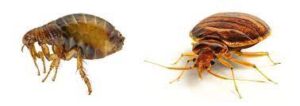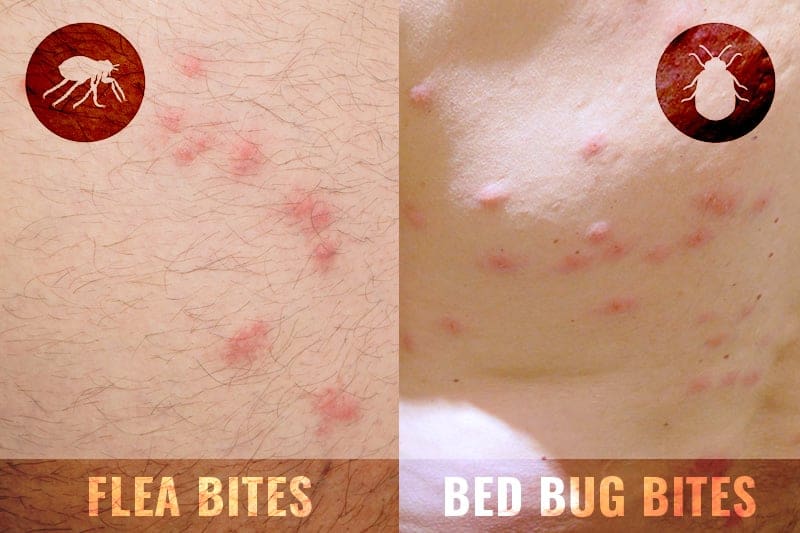750 4th Ave S #304, St. Petersburg
-
 Tiffany Burns
★★★★★
4 months ago
Tiffany Burns
★★★★★
4 months ago
I honestly could not be more grateful for Kendall and Victor. We had a different company scheduled to come treat our house and they canceled the day before. I found this company last minute, called Friday morning in tears and explained … More our situation and that we needed it done that weekend otherwise we’d have to wait a few more weeks. Kendall let me know that she didn’t have any techs in my area available for that weekend but said she’d call her techs to see if anyone would be able to do it. Victor drove 2 HOURS on a Sunday morning and treated our home. My husband and I were both skeptical of the treatment working because our lives and our kids lives have been hell the last few months and we wanted these things gone. Kendall and Victor both answered every question we had and explained everything in detail. It’s been a few days and, well, we’re sleeping again and not waking up with bites. We haven’t had anymore issues so far. Another bonus was that they were actually more affordable than the other company that was supposed to originally treat our home. ❤️❤️❤️
-
 Elane Trice
★★★★★
3 months ago
Elane Trice
★★★★★
3 months ago
We were very pleased with the service we received. They kept to the timeline. We have had no evidence of bedbugs since the extermination. The price was reasonable. They always responded back promptly when I called. I highly recommend this … More company to anyone with a bedbugs problem.
-
 Iggie Velasco
★★★★★
2 months ago
Iggie Velasco
★★★★★
2 months ago
Great company, honesty and integrity two very important valued this company lives by. Came out in 24 hours, did their inspection, and were honest about their findings, no bed bugs which saved me tons of money. Highly recommend!
-
 Bb Gali
★★★★★
a month ago
Bb Gali
★★★★★
a month ago
I wanted to make mention of my recent experience with BBE. After travelling for work, I apparently came home with a traveler. At first I believed I was experiencing a rash, but then I found a bed bug on my sheet. I contacted BBE, and Kendall … More arranged an appointment within a couple of days. I was a bit apprehensive as I had only seen one bug , even after an extensive search, but John explained that many inspections failed to locate the critters as they're so good at hiding. And I couldn't argue with the over 30 bites on my body! When Victor arrived, he was early, professional, and extremely knowledgable. He explained the entire process and then went about his work. That was about two weeks ago, and I haven't had a single bite or issue. The process might be a bit costly, but to be rid of this disgusting problem that fast was completely worth it. It would recommend BBE to anyone with this problem. Thanks very much BBE team!
-
 Karen Henry
★★★★★
3 months ago
Karen Henry
★★★★★
3 months ago
Thank you Kendall and Victor (the tech) for giving my husband and I our peace of mind back. After fighting these precocious little creatures for several months, within 6 hours we were completely void of them. Thank you BBE for your excellent … More treatment.
-
 Trish D'Alessandro
★★★★★
4 months ago
Trish D'Alessandro
★★★★★
4 months ago
John is amazing! He reponded immediately to a vm left on a Saturday and he helped our family come up with a plan to address a complex bed bug issue. The plan he suggested did not even involve his services. He is knowledgeable, honest and … More a straight shooter. I enthusiastically recommend this company!
-
 Dennis Bostwick
★★★★★
a month ago
Dennis Bostwick
★★★★★
a month ago
We are so happy that we hired Bed Bug Exterminator and would recommend their services to anyone. It has been 6 months since the treatment and we have seen 0 bugs...Thank-you very much!!
-
 Mary Andrews
★★★★★
2 months ago
Mary Andrews
★★★★★
2 months ago
My experience with them was amazing . I did not have bugs and they was truthful. Kendall in the office is amazing honest and very nice she gave me some pointers I didn't know about . I highly recommend calling them for a free inspection. … More
-
 Edgar Juarez
★★★★★
7 months ago
Edgar Juarez
★★★★★
7 months ago
Kendall is extremely knowledgeable, professional and patient. She walked me through the process on the phone assessing for bed bugs as well as treatment options. She was interested in me FIRST and my needs, not just making a buck! The tech … More arrived on time and treated our entire home, 100% bed bug free for 3 months.
-
 Cory Kelley
★★★★★
7 months ago
Cory Kelley
★★★★★
7 months ago
They helped me diagnosed the bite marks i have on my body. They set me up for an inspection the next day and did a thorough search of the bedrooms, living room etc. Although we didn’t find any evidence of bugs, the bite marks had them convinced … More we had bed bugs (groups of bites on my body and neck) I decided to get a treatment. Good thing too since the day of treatment Chase the tech found bed bugs once the heaters started running. They are very knowledgeable and passionate about what they does. Thanks BBE
-
 Alan Escobar
★★★★★
7 months ago
Alan Escobar
★★★★★
7 months ago
The BBE team has been great. They spent an hour on the phone and in our home. I trust their judgement and advice. They helped us through this psychology of having bed bugs and we safely exterminated our home and garage. They have been available … More for advice and support after the treatment. I highly recommend their service.
-
 Eileen Godfrey
★★★★★
9 months ago
Eileen Godfrey
★★★★★
9 months ago
I recommend BBE! I was in NY state when I found out I possibly had bed bugs at my condo! I was arriving for the winter with a kitty in 4days. I called BBE in a panic and they went the next day to check and sure enough I needed the treatment. … More They came Saturday for the treatment and I arrived Sunday evening and all was done! They were so reassuring and kind and recognized it was an emergency to get it done as quick as possible! Thank you BBE!!!!!!😀
-
 C. Adams
★★★★★
6 months ago
C. Adams
★★★★★
6 months ago
I want to start out by saying, bed bugs are no joke...ugh!!! When I figured out that we had them, I felt so dirty like anyone would, then I did what anyone else would do I statred Google for a company 🤔 I found the BEST company ever!!! … More BBE..When they answered the phone I truly started crying 😢 I have never had to deal this, the most WONDERFUL lady said hello can I help you..her name is (well I call her) Mrs. Kendelle I said yes please 🙏 .She as the most kind person ever n very patient (especially with me). Unfortunately I had to cancel the first appointment they were very understanding, when it was time for our appointment (yay)..this young man came out n his name was Josh, very nice n talked me though what he would be doing. We did not come back home till the next day, we unfortunately did find few things that happened 😔 I called talked with Mrs. Kendelle she apologize and with no hesitation she sad for me to go and replace the few items send over the receipts...Now, this is how a company does good business they take care of their customers !!! I truly can't fnd enough words on how GREAT this company is!!! I finally have a piece of mind to be comfortable in our home/bed again!!!! Truly THANK YOU, BBE!!!!
-
 Carmen Harris
★★★★★
10 months ago
Carmen Harris
★★★★★
10 months ago
My elderly mother-in-law had bed bugs and the whole situation was very difficult. I highly recommend BBE and John, who is the owner, he answered our questions and gave us specific step by step instructions on how to clean up her house for … More the best results. I chose them for the price and the guarantee, and they did not disappoint.
-
 Jimmy Allison
★★★★★
7 months ago
Jimmy Allison
★★★★★
7 months ago
False Alarm- We ultimately, did not have bedbugs. However, we very much appreciated their time and expertise. We felt much better knowing we did not have bed bugs.
-
 Lola Miller
★★★★★
5 months ago
Lola Miller
★★★★★
5 months ago
Needed a last minute call out for one of my vacation homes, They got out to the home same day on a Sunday at that which was great! As most places aren’t even open. super friendly and honest people. Will definitely be using again
-
 Pete Copeland
★★★★★
7 months ago
Pete Copeland
★★★★★
7 months ago
We discovered we had bedbugs when my 3-year-old started waking up with bites. My husband and I searched our house and found one adult bedbug— but virtually no other evidence they existed. When our son continued to get bit nightly, we knew … More we had a problem. We found BBE through a Google search and they spent an hour on the phone with me (on a Saturday!) telling me what measures to take that night to ensure my son wouldn’t be bit again— this was before we had committed to working with him. We ended up booking them to come out the following Monday and do a heat treatment on our home. The treatment is quite extensive, but when your child is waking up with bites every morning, you want the best and the machine BBE use is like military grade equipment. I knew I chose well when they pulled up.
-
 Hailey Mendez
★★★★★
7 months ago
Hailey Mendez
★★★★★
7 months ago
Thankfully, I got a hold of John. He took the time to explain how they could manage this situation and make sure the bed bugs were gone from all the persons belonging and my car. They did a combination of spray and heat treatment on the … More new home and all the belongings (once we unpacked them) and spray treated my car (free of charge). He made sure we knew how to not leave the home with bed bugs (we set up a plan to leave our clothing on site after moving and unpacking their belongings. So much communication yet I was always greeted by a friendly person, you cannot provide better service.
-
 Ja'Liah Limbacker
★★★★★
7 months ago
Ja'Liah Limbacker
★★★★★
7 months ago
Although I didn't end up being able to get help from BBE as my apartment has their own exterminators, they were still very helpful. I very quickly got a call back after emailing and the call was extensive and incredibly informative. … More TY Guys.
-
 Armando Sparks
★★★★★
10 months ago
Armando Sparks
★★★★★
10 months ago
I have to leave this review, one of the best experiences I’ve had with pest services. I don’t want to say what home, but I booked this company to treat a group residence. It was a massive production, 14 rooms, 2 stories. They brought out … More two trucks of gear, they’re professional and got the job done in our schedule. Highly recommend.
-
 Murray Boulton
★★★★★
7 months ago
Murray Boulton
★★★★★
7 months ago
We recently helped a low-income gentleman move from one low-income housing unit to a newer low-income housing unit. We loaded up my car and another with his stuff. As we unloaded at the new apartment, we discovered that in addition to moving … More his belongings, we also transported bed bugs. What a mess. I called different bed bug exterminators and pest control companies and for most of them, I ended up in voicemail and in some cases, I didn't receive a call back.
-
 Raul McConnell
★★★★★
9 months ago
Raul McConnell
★★★★★
9 months ago
Kendall was great. Very attentive to our concerns and addressed them all prior to treatment, and Victor was on time, and got to work, texted when the job was completed. Bye Bye Bed Bugs.
-
 Craig Snell
★★★★★
9 months ago
Craig Snell
★★★★★
9 months ago
Excellent service over the phone and in-person. Service person was prompt and hard working. It’s been a few weeks since he was here and I haven’t seen any bed bugs. Nice to have my bed back.
-
 Benjamin Whitaker
★★★★★
11 months ago
Benjamin Whitaker
★★★★★
11 months ago
Chase was thorough and knowledgeable, making sure every corner was treated. He worked his butt off all day long to ensure our home was bed bug free.
-
 Mathew Tyler
★★★★★
8 months ago
Mathew Tyler
★★★★★
8 months ago
I worked with two other companies before and both failed to get rid of our bed bugs. Called BBE they were the only one who was able to effectively solve my issue. Both of his specialists who came in to do treatment were extremely helpful, … More professional and friendly. Strongly recommend! 12 weeks no bed bugs.
-
 Shawn Stark
★★★★★
8 months ago
Shawn Stark
★★★★★
8 months ago
I was stunned, surprised and even felt embarrassed to learned that an area of our home needed the attention of a bed bug exterminator.BBE immediately responded to our call. They were very knowledgeable and put our minds at ease. Kendall … More & John were very thorough and professional! They explain things like how bed bugs can come in to your home, what to look for, services they provide to meet the specific needs, etc.They have remained in contact with us throughout this process which I appreciate!
-
 Lavern Robbins
★★★★★
9 months ago
Lavern Robbins
★★★★★
9 months ago
Good work, discreet and effective. got rid of my bed bugs in 1 day. Man it was hot in my house when I returned hotter than I expected, be careful when you return home.
-
 Lorenzo Waller
★★★★★
9 months ago
Lorenzo Waller
★★★★★
9 months ago
Victor came out today for an inspection. He was super nice, extremely knowledgeable, and explained everything from start to finish. 10 out of 10 would recommend!
-
 Ernesto Gardner
★★★★★
a year ago
Ernesto Gardner
★★★★★
a year ago
When your fed-up and want the job done once and for all it's worth paying the price to get it done! The technicians are extremely professional, friendly, and helpful. They take the time to explain everything to you, and get the job … More done right! I was very pleased with their service, and I highly recommend.
-
 Abraham Snyder
★★★★★
a year ago
Abraham Snyder
★★★★★
a year ago
I highly recommend Bed Bug Exterminator to anyone dealing with bed bugs. Their professionalism, expertise, and commitment to customer satisfaction are truly exceptional. Thank you for making my home safe and comfortable again!
-
 William Kimball
★★★★★
10 months ago
William Kimball
★★★★★
10 months ago
My landlord had me trapped in spray treatment hell, the staff at BBE insisted on speaking with my landlord and helped me get approval to get treatment. Yes they would not approve a heat treatment! The accomplished the tasks at hand and … More my bed bug problems are finaly OVER.











